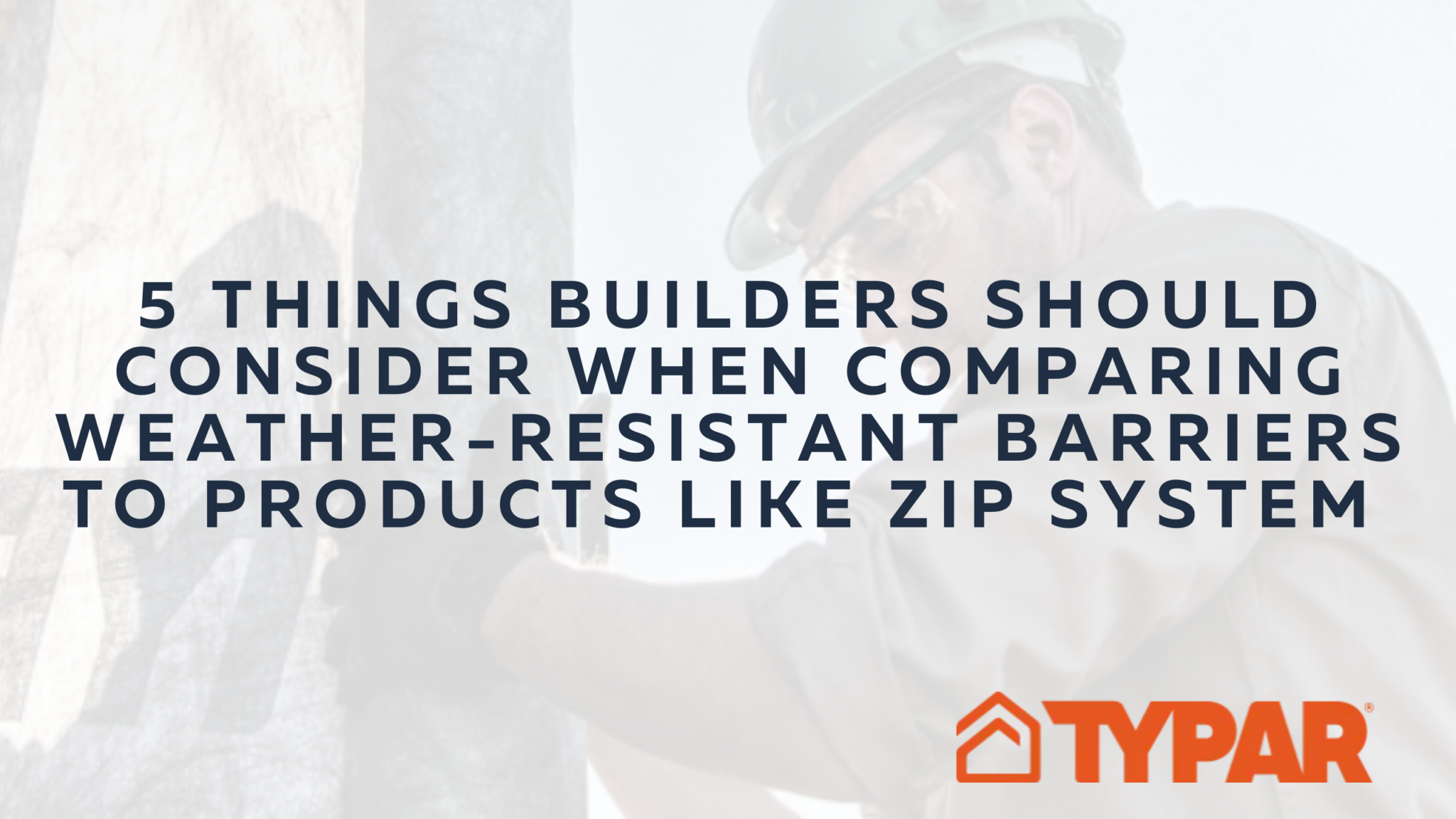5 Things Builders Should Consider Comparing Weather Barriers

Both traditional weather-resistant barriers (WRBs), like TYPAR® BuildingWrap, and structural wall panels with integrated WRBs, like Zip System®, can be used to safeguard a building. However, there are some misconceptions when it comes to comparing these products, their performance benefits and how they are installed. Here are five things building professionals should keep in mind when selecting the right weather barrier for their next project:
- The margin for error when applying fasteners to WRB sheathing boards is much smaller than when applying traditional wraps. With WRB sheathing boards, improperly spaced or overdriven fasteners can create a path for water penetration through the sheathing board, often voiding the manufacturer’s warranty.
- Like any WRB layer, the seams between WRB sheathing boards are areas for potential moisture intrusion and require special care when it comes to taping and sealing. With these types of products, thermal cycling causes the OSB sheathing boards to contract and expand, which weakens the bond between the board and tape allowing for unwanted air and water intrusion.
Another important fact to consider—WRB sheathing boards require roughly three times the amount of tape compared to a traditional building wrap. A typical home has a quarter mile of sheathing seams and when using WRB sheathing boards, all those seams need to be taped and rolled out. More joints = increased chances for tape failure = more potential for air and water intrusion.
- WRB sheathing boards are tight… maybe too tight. Because the permeability of wet OSB or lumber is zero, if WRB sheathing boards take on water through overdriven fasteners or compromised taping, that moisture won’t have any way to escape. If the permeance of the WRB layer is too low, it reduces the outward drying potential of the wall cavity through the gypsum board and through the WRB layer into the airspace during the heating season. TYPAR has a full lineup of WRBs in between 10 and 20 perms, which is the “sweet spot” for optimal breathability.
- Despite claims, installing WRB sheathing boards does not save large amounts of time on the jobsite. With the additional attention and time required to properly fasten and tape these systems, traditional WRBs and WRB sheathing boards take around the same amount of time to completely and properly install.
- Traditional WRBs like TYPAR BuildingWrap have been around for decades. By comparison, WRB sheathing boards are relatively new to the market. With a proven track record of producing durable, high-quality products that properly protect buildings long-term, it makes sense to trust your building with something that has proven to excel during the building process and beyond. The confidence TYPAR has in its weather protection products is backed by an industry-leading limited lifetime warranty* that includes both labor and materials.
Despite what you may have heard, Zip System and other products like it come with several notable risks that can slow down your project and potentially lead to moisture infiltration into the building envelope. Improper seams, overdrawn fasteners and suboptimal permeability are all risks you take when choosing to use a product like Zip. It’s important to keep these performance qualities and installation requirements in mind when deciding how to protect your next build from the elements. For a more in-depth review of the key performance and installation differences between traditional house wrap and products like Zip System, contact Bijan Mansouri, Technical Manager for TYPAR, at bijanmansouri@berryglobal.com, or Andrew Irvine, Product Manager for TYPAR, andrewirvine@berryglobal.com. *TYPAR DrainableWrap is part of the TYPAR lifetime limited system warranty when used with the complete TYPAR Weather Protection System. Certain limitations and exclusions apply. See the TYPAR Weather Protection System Limited Warranty for full details located online at www.typar.com/downloads
